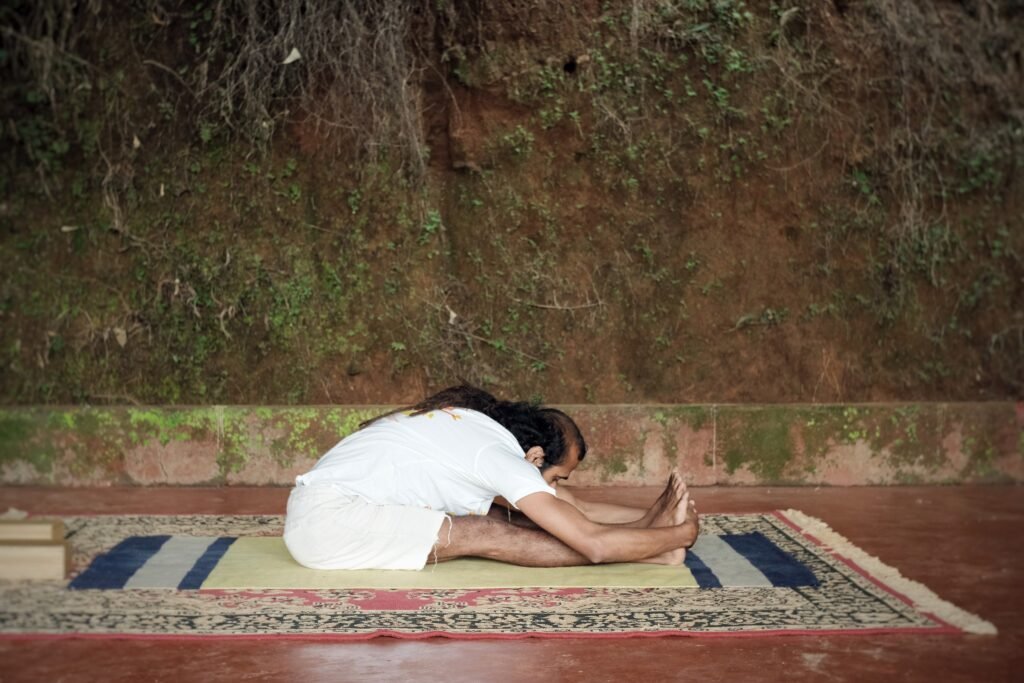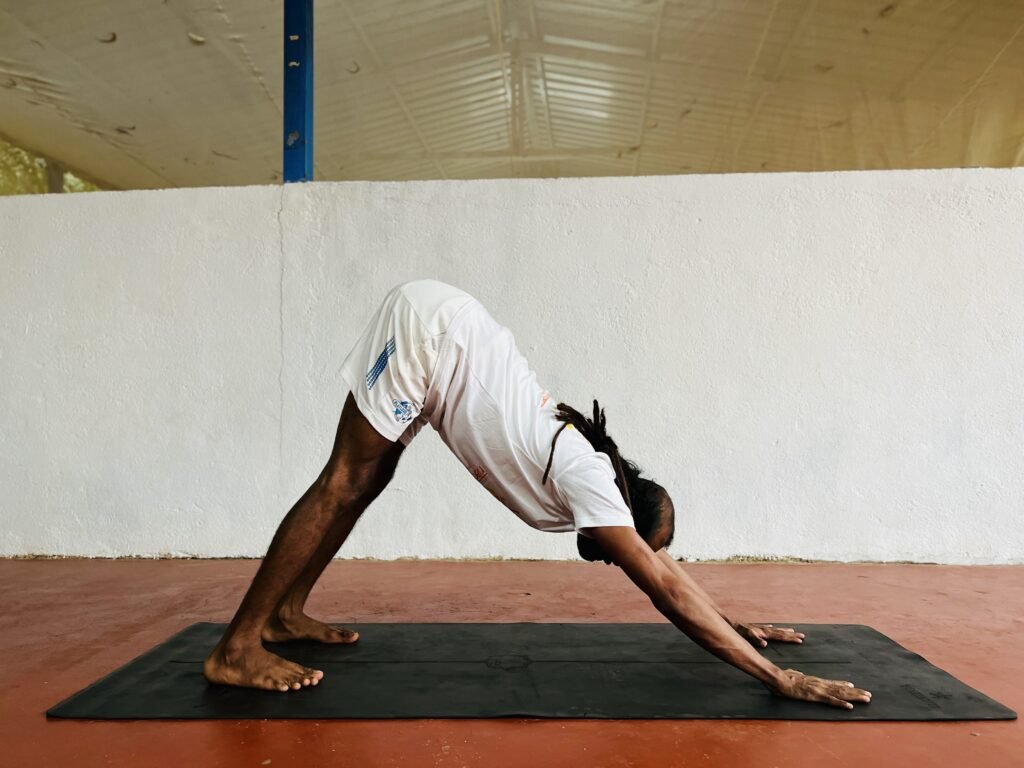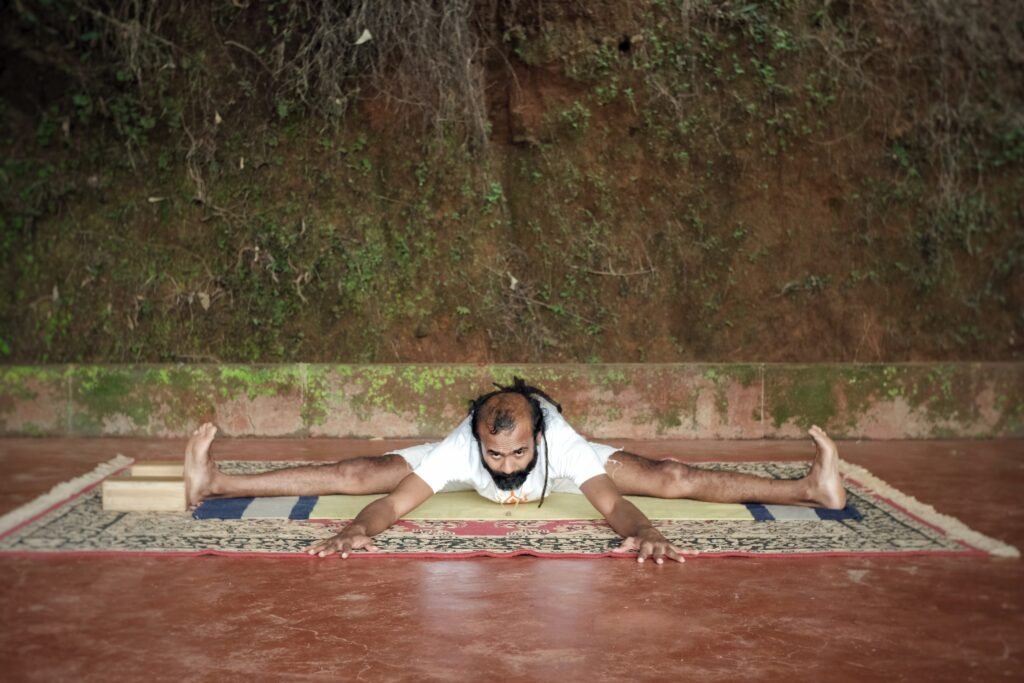
The hamstrings are a set of muscles that start at your lower pelvis, attach to your knee and lower legs, and run along the back of your thighs. They are frequently to blame for various sports-related injuries and chronic pain brought on by tightness.
Poor posture, low-back pain, and other problems can result from tight hamstrings. Since yoga poses can help your hamstrings become more flexible and mobile and prepare you for better movement patterns while running, biking, and participating in sports, they can be important additions to most training programs.
ADVANTAGES OF LOOSE HAMSTRINGS:
-
-
Increased Joint Health and Performance
-
All facets of physical performance depend heavily on the posterior chain or the muscles along the back of your body. Strong and flexible hamstrings can increase running speed, agility, and power. When your hamstrings are too tight, your body will use other muscle groups to make up for it, which will use more energy and increase your risk of injury. Additionally, a wide range of motion will guarantee healthy joints.
-
-
A Sound Spine
-
Your pelvis will be less mobile if your tight hamstrings put more strain and pressure on your lower back. Your hamstrings play a crucial role in maintaining the health of your spine, pelvis, and knees.
A healthy upright posture will be supported by flexibility in this area. Regular movement patterns like walking, running and sitting cause your hamstring muscles to shorten and tighten.
Stretching regularly to improve flexibility in this area will balance them out and return them to a balanced and healthy state.
-
-
Reduced Injury Risk
-
When your hamstrings are tight, your pelvis may tilt backward, putting strain on your low back and increasing your risk of injury and chronic pain. Other muscles will make up for tight hamstrings. Poor recruitment patterns and muscle imbalances can cause a variety of issues. Due to the strain that tight hamstrings place on the knees, knee pain is a common problem among runners.
Furthermore, you should concentrate on improving your hamstring flexibility for various reasons. You might discover that you have recovered your mobility and eliminated the source of your persistent lower back or knee pain.
5 POSES FOR HAMSTRINGS

DOWNWARD FACING DOG POSE:
Downward-facing dog pose is a resting inversion pose that strengthens the upper body and improves flexibility. In this position, the body forms an inverted “V,” with the hips pushing upward and the feet and hands pressing firmly into the floor.
Beginners who lack the flexibility to complete the full pose can support their hands with yoga blocks or a folding chair.
Adho Mukha Svanasana, the pose’s Sanskrit name, is also used to describe the downward-facing dog.
- Start in a plank position with your feet hip-width apart and your hands under your shoulders.
- Your hips should be the point of a triangle formed by bending your knees and lifting your upper body backward.
- To extend your spine, energetically lift your shoulders away from your hands, your hips away from your shoulders, and all four corners of your hands. Knuckles and finger pads should also be rooted evenly down.
- Begin by bending your knees, pushing your upper thighs away from your torso as your heels droop toward the floor. Then, gradually straighten your legs.
- Spend 5-7 breaths here.
RECLINING HAND TO BIG TOE POSE
The idea of standing up and stretching might be too much for you to bear after a long jog, an extended time spent on your feet, or even when you’re feeling exhausted.
Enter Reclining Hand-to-Big-Toe Pose, also known as Supta Padangusthasana. This supine stretch is excellent for new yogis as an introduction to opening up through the hamstrings and serves as the ideal lead-in to Big Toe Pose (Padangusthasana). Although the extended leg may be the focus of the pose, the bottom leg and the extended leg work in harmony with one another, reminding us once more of what makes yoga practice so lovely.
- Stretch your legs on the ground as you lay down.
- Keeping both corners of your hips firmly planted and level, hug one knee into your chest.
- Yoga straps can be wrapped around the ball of the foot while holding either end in each hand, or you can hook your big toe with your index and middle fingers.
- Extend your leg upward toward the ceiling and your torso while pressing through the ball of your foot.
- As you transition, center and ground your hips and shoulders.
- Take 5-7 breaths, release slowly, and then alternate sides.

INTENSE SIDE STRETCH POSE
When performed correctly, this pose invites a lovely sense of equilibrium between letting go into the depth of the forward fold and maintaining a strong and stable foundation through the legs and feet. Our practice (and life) start to feel much easier when we are in alignment.
- Align your heels together, and space your feet 3 to 4 feet apart.
- Straighten your front foot as you turn your back foot out at a 30- to a 45-degree angle.
- To gain more room in your hamstrings and pelvis, fold forward while hinging at your hips and placing your hands on blocks on either side of your front foot.
- With lengthening your torso on all sides, square your hips to the front corners of your mat.
- Without moving your hips about the ground, gradually extend your legs toward being straight.
- The outside edge of your back foot should be grounded, and your front foot’s big toe should be rooted through the surface.
- Switch sides after five to seven breaths.

WIDE ANGLED SEATED FORWARD BEND
Wide-Angled Seated Forward Bend, also known as Wide-Legged Forward Bend, provides a powerful upper and lower body stretch and the calming effects of forwarding folds. Although this pose appears to be about the leg stretch, you should also focus on lengthening your spine by forming long lines and avoiding collapsing inward and losing alignment. Hamstring tightness can prevent this lengthening.
- Stand with your feet parallel and approximately 3–4 feet apart.
- Fold your spine long and hinge at the hips.
- Put your hands on the ground or the blocks directly beneath your shoulders.
- Bring your hands to the area between your feet while bending your elbows back to intensify the stretch in your hamstrings.
- Don’t round your spine; instead, deepen the fold from your hips.
- Root firmly into the four corners of your feet, maintain quad involvement, brace your core, and lengthen your spine.
- Reverse your direction to stand and release the pose after taking 5-7 breaths.

TRIANGLE POSE
The Triangle Pose, also known as Utthita Trikonasana, is a fundamental yoga pose that appears in almost all yoga forms.You will likely come across it during your first few yoga classes and for years.The relatively easy setup of Triangle Pose belies its effectiveness as a hamstring stretch. The chest can twist deeply and open up when sturdy legs and well-grounded feet form the pose’s foundation.
- Standing facing a long edge of your mat and parallel to your feet, space your feet widely apart (3–4 feet).
- To make your left foot parallel to the long edge of your mat, spin your left heel in and your toes out.
- Fold laterally over your left leg while making a deep hip turn to the left.
- Reach with your left hand in a straight line over your left shoulder and place your right hand on a block outside your right foot.
- Keep it long from the base of your spine to the top of your head.
- Turn your torso to the left, away from the ground.
- Lift the inner arch as you firmly root the left foot’s big toe mound.
- To find stability, contract your quadriceps and tighten your abdominal muscles.
- Release the pose after five to seven breaths.
- Swap sides.
These five poses will get your hamstrings loose and help you become more flexible.
Always pay attention to your body’s signals and warm up completely before each pose.
Each pose can be modified in a variety of ways, and various props, including straps, blocks, and blankets, can be employed. Avoid stretching too quickly or you risk straining your hamstrings, which will only make them tighter.
Finally, keep in mind that yoga goes beyond the mat. You are not just your physical frame and muscles. The original purpose of asanas, or yoga poses, was to make it easier to sit still for meditation. With more flexibility, you might discover that it is simpler to carry out other yogic practises away from the mat.
